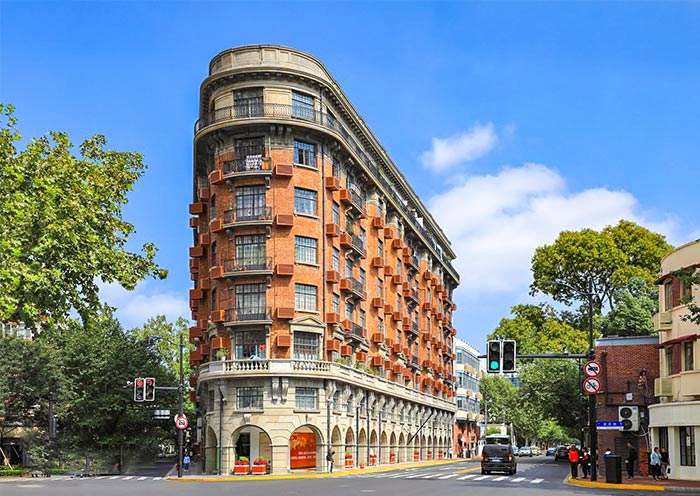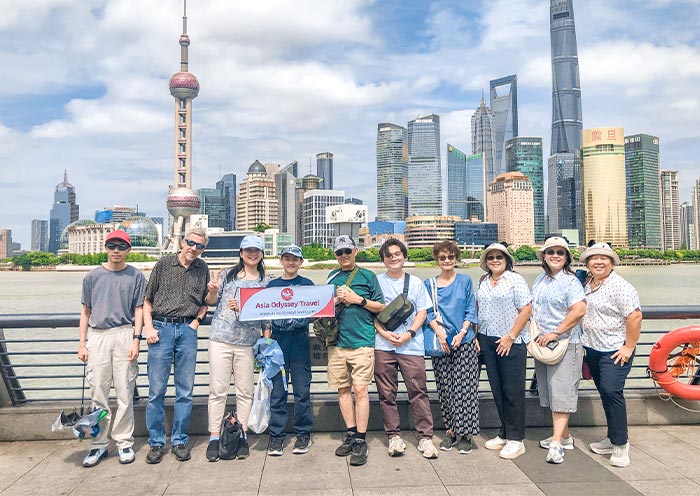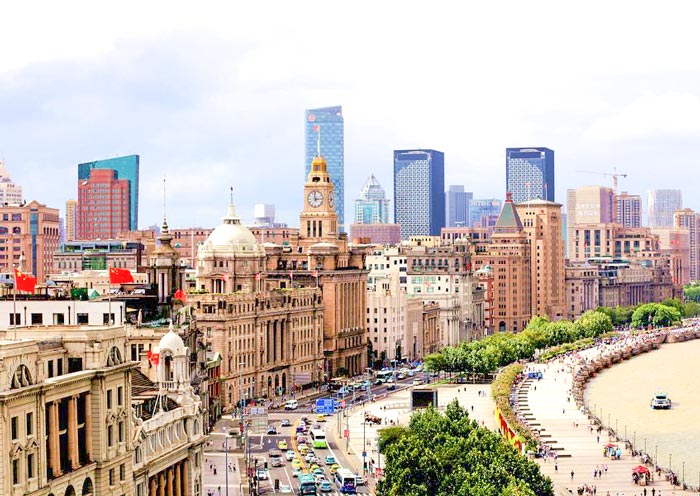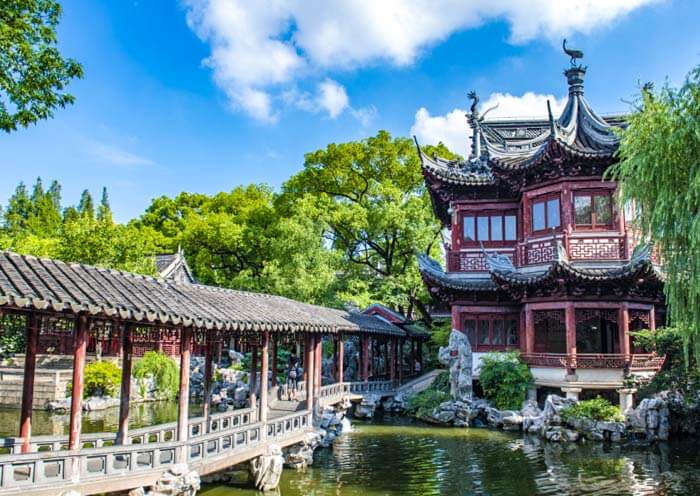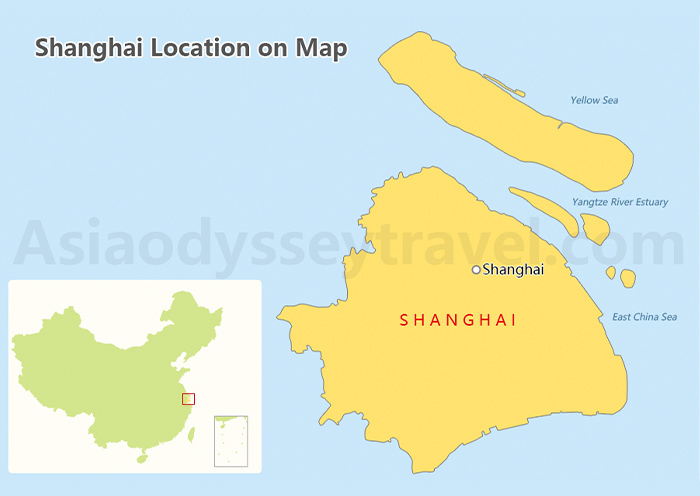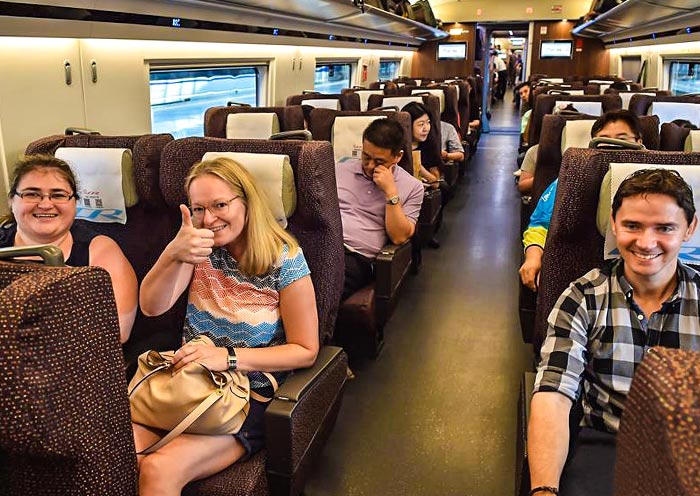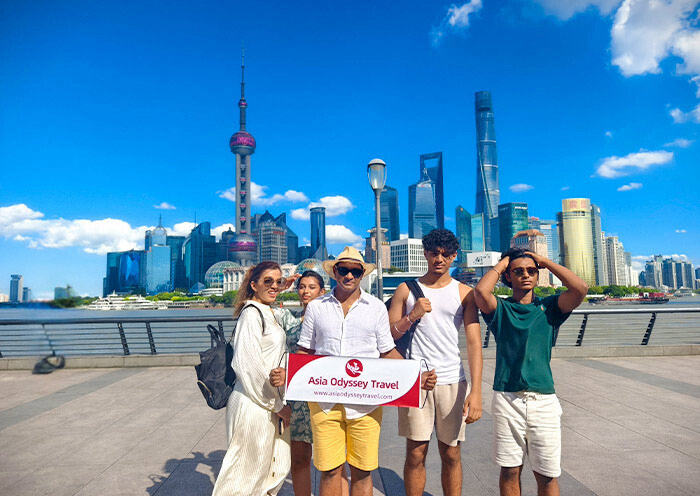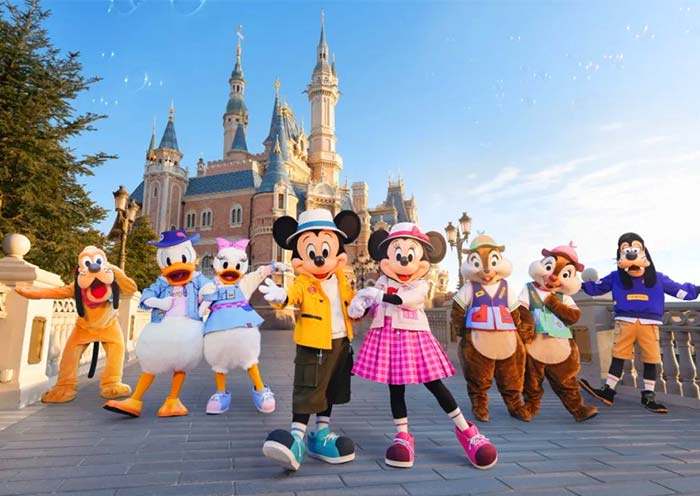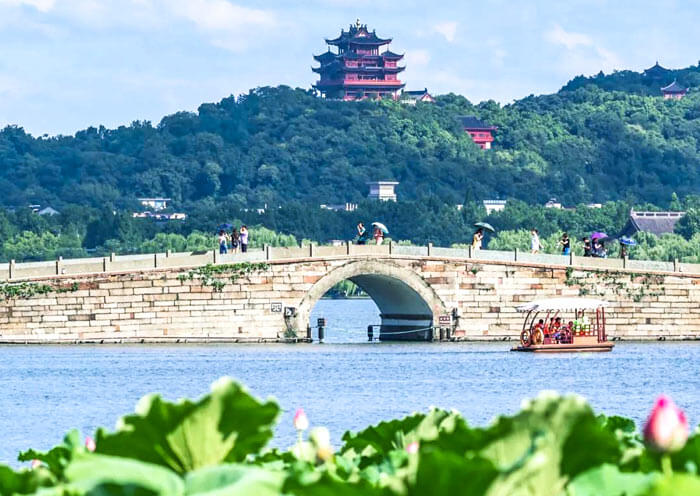Content Preview
 Shanghai High Speed Train Facts
Shanghai High Speed Train Facts Popular High Speed Trains from Shanghai
Popular High Speed Trains from Shanghai Other High Speed Train Routes from Shanghai
Other High Speed Train Routes from Shanghai High Speed Train Routes to Shanghai
High Speed Train Routes to Shanghai Major High Speed Train Stations in Shanghai
Major High Speed Train Stations in Shanghai How to Book Train Tickets of Shanghai High Speed Rail?
How to Book Train Tickets of Shanghai High Speed Rail? How to Plan a Shanghai High Speed Train Tour?
How to Plan a Shanghai High Speed Train Tour?
Shanghai High Speed Train Facts
Shanghai, one of China's busiest railway hubs, runs about 400 high-speed trains daily, connecting to over 150 cities nationwide. Operating from both Hongqiao and Shanghai Railway stations, these modern G, D, and C-series trains zip along at impressive speeds of 200-350 km/h. Whether you're heading to nearby Hangzhou or distant Beijing, Shanghai's extensive bullet train network makes exploring China a breeze!
Popular High Speed Trains from Shanghai


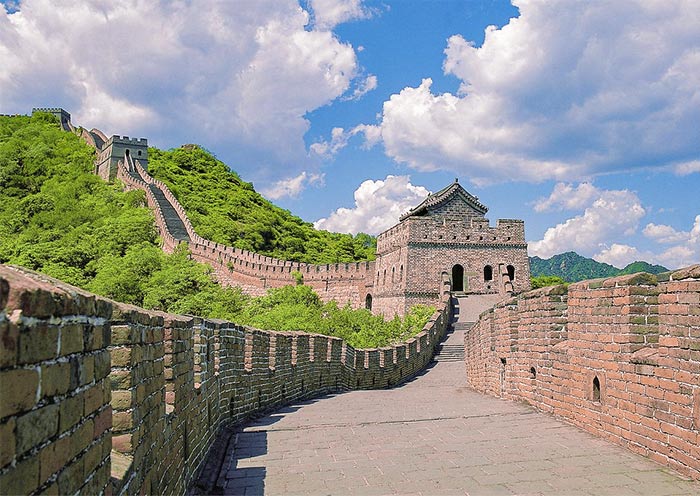
Other High Speed Train Routes from Shanghai
From Shanghai, high-speed trains fan out across China in all directions! Head north to explore Beijing, Tianjin, or even Harbin. Journey west to discover historical Xi'an or the pandas in Chengdu. Southern routes take you to vibrant Guangzhou and Shenzhen, while eastern connections zip through Suzhou and Nanjing. Want to visit China's beautiful mountains? Catch a train to Huangshan or Zhangjiajie. The possibilities are endless from Shanghai's railway hubs!
- Shanghai to Zhengzhou
- Shanghai to Hong Kong
- Shanghai to Harbin
- Shanghai to Xiamen
- Shanghai to Chongqing
- Shanghai to Guangzhou
- Shanghai to Nanjing
- Shanghai to Xi'an
- Shanghai to Hangzhou
- Shanghai to Changsha
- Shanghai to Beijing
- Shanghai to Wuhan
- Shanghai to Shenzhen
- Shanghai to Zhangjiajie
- Shanghai to Chengdu
- Shanghai to Guilin
- Shanghai to Huangshan
- Shanghai to Jinan
- Shanghai to Kunming
- Shanghai to Lanzhou
- Shanghai to Luoyang
- Shanghai to Qingdao
- Shanghai to Shanghai
- Shanghai to Wuxi
- Shanghai to Xining
- Shanghai to Yichang
- Shanghai to Suzhou
High Speed Train Routes to Shanghai
Heading to Shanghai? You can reach this exciting metropolis by bullet train from practically anywhere in China! Zip in from Beijing in just 4.5 hours, or take a quick 1-hour ride from Nanjing. Coming from the south? Hop aboard in Guangzhou or Shenzhen for a comfortable 6-7 hour journey. Western cities like Xi'an and Chengdu also offer direct high-speed connections, making Shanghai super accessible from all directions!
Major High Speed Train Stations in Shanghai
Shanghai has 4 high Speed Train Stations: Shanghai Railway Station, Shanghai Hongqiao Station, Shanghai Songjiang Station, Shanghai South Station.
You've got two main stations to work with! Shanghai Hongqiao Railway Station is your go-to hub for most high-speed trains - it's ultra-modern and perfectly connected to the metro system. Shanghai Railway Station handles some bullet trains too, particularly those heading north. Both stations are incredibly well-organized and offer easy access to the city center. Just pick the one that suits your route best!
Want to book Shanghai high-speed train tickets without the hassle? You've got several options! While the official 12306 app is a popular choice, they can be tricky for international travelers due to language barriers and payment issues.
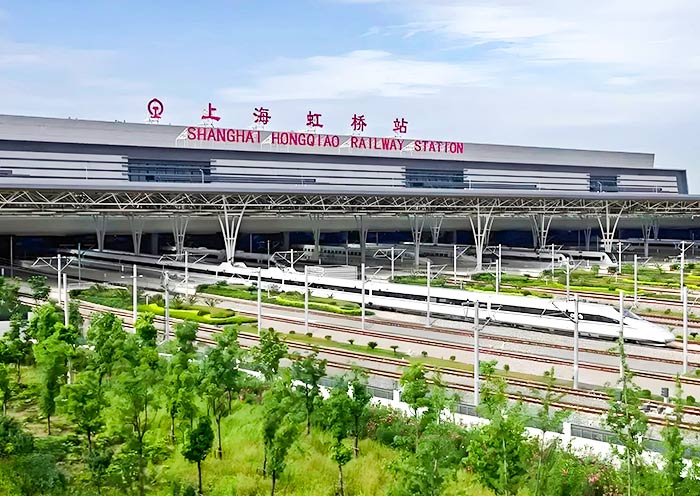
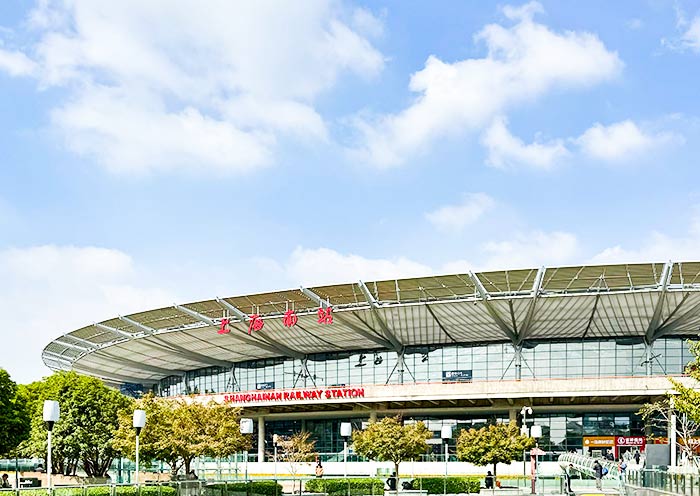
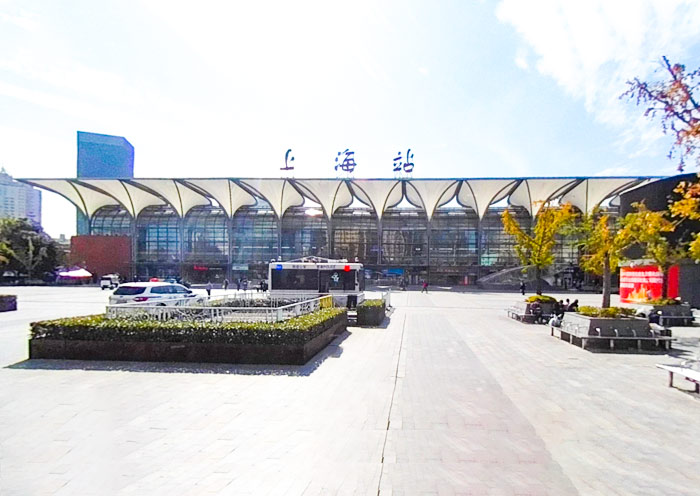
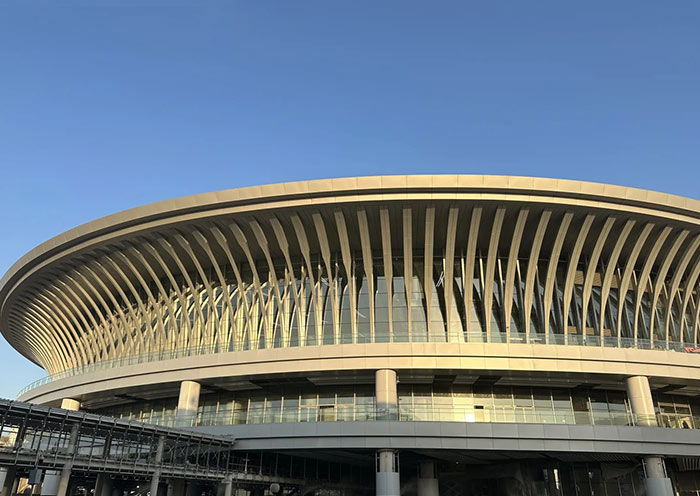
How to Book Train Tickets of Shanghai High Speed Rail?
Your easiest bet? Book through reliable travel agencies like Asia Odyssey Travel, who can handle everything from ticket reservations to station guidance. We'll help you choose the best routes, select comfortable seats, and even arrange station transfers. Plus, we can provide English-speaking support throughout your journey.
If you're feeling adventurous, you can buy tickets directly at the station counters, but be prepared for potential language barriers. Pro tip: book at least 3-5 days in advance, especially during peak seasons or holidays, to secure your preferred seats and times!
- United States (+1)
- Australia (+61)
- Singapore (+65)
- Malaysia (+60)
- Philippines (+63)
- Canada (+1)
- Italy (+39)
- Indonesia (+62)
- United Kingdom (+44)
- Spain (+34)
- Mexico (+52)
- Hong Kong (+852)
- Thailand (+66)
- United Arab Emirates (+971)
- New Zealand (+64)
- South Africa (+27)
- Germany (+49)
- Brazil (+55)
- India (+91)
- France (+33)
- Vietnam (+84)
- The Netherlands (+31)
- Saudi Arabia (+966)
- Ireland (+353)
- Argentina (+54)
- Switzerland (+41)
- Romania (+40)
- Pakistan (+92)
- Japan (+81)
- Portugal (+351)
- Bangladesh (+880)
- South Korea (+82)
- Puerto Rico (+1)
- Türkiye (+90)
- China (+86)
- Belgium (+32)
- Qatar (+974)
- Greece (+30)
- Taiwan (+886)
- Austria (+43)
- Poland (+48)
- Israel (+972)
- Chile (+56)
- Sri Lanka (+94)
- Nigeria (+234)
- Peru (+51)
- Colombia (+57)
- Hungary (+36)
- Nepal (+977)
- Denmark (+45)
- Bulgaria (+359)
- Norway (+47)
- Slovenia (+383)
- Sweden (+46)
- Kuwait (+965)
- Costa Rica (+506)
- Ecuador (+593)
- Venezuela (+58)
- Malta (+356)
- Croatia (+385)
- Tunisia (+216)
- Czechia (+420)
- Mongolia (+976)
- Bahrain (+973)
- Mauritius (+230)
- Papua New Guinea (+675)
- Cambodia (+855)
- Dominican Republic (+1)
- Luxembourg (+352)
- Finland (+358)
- Guatemala (+502)
- Myanmar (+95)
- Maldives (+960)
- Slovakia (+421)
- Laos (+856)
- Serbia (+381)
- Brunei (+673)
- Oman (+968)
- Macao (+853)
- Panama (+507)
- Morocco (+212)
- Jordan (+962)
- Georgia (+995)
- Fiji (+679)
- Bolivia (+591)
- Lithuania (+370)
- Bahamas (+1)
- Cyprus (+357)
- Latvia (+371)
- Bhutan (+975)
- Iraq (+964)
- Iran (+98)
- Kenya (+254)
- Jamaica (+1)
- Zimbabwe (+263)
- Azerbaijan (+994)
- Uruguay (+598)
- Estonia (+372)
- Andorra (+376)
- Cameroon (+237)
- Ghana (+233)
- Kazakhstan (+7)
- Nicaragua (+505)
- Egypt (+20)
- Russia (+7)
- Albania (+355)
- Réunion (+262)
- Montenegro (+382)
- Algeria (+213)
- Afghanistan (+93)
- Martinique (+596)
- Uganda (+256)
- Honduras (+504)
- North Macedonia (+389)
- Trinidad and Tobago (+1)
- Suriname (+597)
- Antigua and Barbuda (+1)
- Zambia (+260)
- Ukraine (+380)
- Armenia (+374)
- Barbados (+1)
- Belarus (+375)
- Palestine (+970)
- Lesotho (+266)
- Moldova (+373)
- Ethiopia (+251)
- French Polynesia (+689)
- Gambia (+220)
- Guam (+1)
- Gibraltar (+350)
- Isle of Man (+44)
- New Caledonia (+687)
- El Salvador (+503)
- Comoros (+269)
- Seychelles (+248)
- Chad (+235)
- Samoa (+685)
- Cook Islands (+682)
- Palau (+680)
- Paraguay (+595)
- DR Congo (+243)
- Solomon Islands (+677)
How to Plan a Shanghai High Speed Train Tour?
Planning a rail adventure from Shanghai? Let me help you craft the perfect itinerary based on your visa situation and time frame!
Got a 144-hour visa-free transit? Make the most of it by exploring Shanghai plus nearby gems! Zip to Suzhou (30 mins) for classical gardens, or Hangzhou (1 hour) for the stunning West Lake. You can easily combine these three cities in 5-6 days.
Traveling with a China visa? The possibilities are endless! Here are some perfect combos:
Short Stay (4-5 days):
Shanghai (2 days) + Suzhou & Hangzhou (2-3 days)
Perfect for experiencing East China's most iconic cities
Medium Stay (7-8 days):
Shanghai (3 days) + Yellow Mountain (2 days) + Nanjing (2 days)
Or try Shanghai (3 days) + Beijing (4 days) on the fastest trains
Long Stay (10-14 days):
Shanghai → Beijing → Xi'an → Shanghai
Or go south: Shanghai → Guangzhou → Guilin → Shanghai
Great for experiencing China's diverse cultures and landscapes
Pro tip: Base yourself in Shanghai and take day trips first, then venture further out. The city's two railway stations (Hongqiao and Shanghai Station) make it super easy to reach most major destinations. Remember to book your tickets 3-5 days in advance, especially during peak seasons!
Helpful Links:
15 Best Things to Do in Shanghai, Top, Unusual & Things to Do in Shanghai⋮How to Plan a Trip to Shanghai 2025: Shanghai Planning for First Timers⋮Beijing Xi’an Shanghai Travel Itinerary for First Timer to China⋮
Related Tours:
Related Shanghai Travel Articles
-
 15 Best Things to Do in Shanghai, Top, Unusual & Things to Do in Shanghai2025-01-21
15 Best Things to Do in Shanghai, Top, Unusual & Things to Do in Shanghai2025-01-21 -
 How to Plan a Trip to Shanghai: Shanghai Planning for First Timers2024-12-16
How to Plan a Trip to Shanghai: Shanghai Planning for First Timers2024-12-16 -
 The Bund Shanghai (Wai Tan): Facts, What to See, Things to Do, Tips2024-12-16
The Bund Shanghai (Wai Tan): Facts, What to See, Things to Do, Tips2024-12-16 -
 Yu Garden Shanghai: Yuyuan Garden, Bazaar & Opening Hours (2025 Guide)2024-12-16
Yu Garden Shanghai: Yuyuan Garden, Bazaar & Opening Hours (2025 Guide)2024-12-16 -
 Shanghai Maps: Tourist Map of Shanghai, China (2025)2024-11-21
Shanghai Maps: Tourist Map of Shanghai, China (2025)2024-11-21 -
 Beijing to Shanghai2025-01-21
Beijing to Shanghai2025-01-21
FAQs/Tips about Shanghai Tours
-
1. Will language be a problem in Shanghai?+
While Mandarin Chinese is the official language in Shanghai and throughout China, English is becoming more widely spoken in major cities like Shanghai, especially among younger generations and those working in the tourism industry. However, it's important to note that the level of English proficiency can vary among individuals.
In popular tourist areas, hotels, upscale restaurants, and larger shopping centers in Shanghai, you can usually find staff members who can communicate in English to some extent. Many signs, menus, and transportation announcements also have English translations. Additionally, Shanghai has been investing in English language education and promoting bilingualism to support international visitors.
However, it's still advisable to be prepared for language barriers, especially when interacting with locals outside of tourist areas or when venturing into smaller local establishments. It can be helpful to learn a few basic Mandarin phrases or carry a translation app to assist with communication.
If you require assistance or have specific needs, consider using the services of a local guide or interpreter who can facilitate your interactions and help navigate language challenges.
Overall, while English is gradually becoming more prevalent in Shanghai, it's wise to be patient, flexible, and open to non-verbal communication to overcome any language barriers you may encounter during your visit.
-
2. When is the best time to visit Shanghai?+
The best time to visit Shanghai is during the spring (April to May) and autumn (September to November) seasons. These periods offer pleasant temperatures, moderate humidity, and fewer chances of rain compared to other times of the year. Here's a breakdown of the seasons in Shanghai:
1) Spring (April to May): Spring in Shanghai brings mild temperatures, blossoming flowers, and vibrant greenery. It's an ideal time for outdoor activities and exploring the city's parks and gardens. However, do note that April can be a bit unpredictable with occasional rain showers.
2) Summer (June to August): Shanghai's summer is hot and humid, with temperatures often exceeding 30°C (86°F). It can be uncomfortable for outdoor activities, and the city experiences frequent rain showers and occasional typhoons. If you visit during summer, be prepared for high humidity and consider indoor attractions and air-conditioned spaces.
3) Autumn (September to November): Autumn is considered the best time to visit Shanghai. The weather is pleasant, with cooler temperatures and lower humidity. It's a great time for sightseeing, strolling along the waterfront, and enjoying outdoor activities. However, early autumn (September) can still be a bit warm, so be prepared for some lingering summer-like weather.
3) Winter (December to February): Shanghai's winter is chilly and damp, with occasional cold spells. Temperatures can drop to around 0°C (32°F), but snowfall is rare. Winter is a quieter time in Shanghai, and you can enjoy fewer crowds and lower hotel rates. It's a good time to explore indoor attractions, visit museums, and experience traditional Chinese New Year celebrations if your visit coincides with late January or early February. -
3. What is Shanghai cuisine and where can I find them?+
Shanghai cuisine, also known as Hu cuisine, is a prominent culinary style in China known for its delicate flavors, emphasis on freshness, and meticulous cooking techniques. Here are some popular Shanghai dishes you should try and where you can find them in Shanghai:
1) Xiaolongbao (小笼包): These steamed soup dumplings are a Shanghai specialty. The delicate dumpling skins encase a flavorful filling with a burst of hot, savory soup. You can find excellent Xiaolongbao at renowned establishments like Nanxiang Steamed Bun Restaurant and Jia Jia Tang Bao.
2)Shengjianbao (生煎包): Similar to Xiaolongbao, Shengjianbao are pan-fried soup dumplings. They have a crispy bottom and a juicy filling. Yang's Fry-Dumpling and Jia Jia Tang Bao are popular spots to savor this local favorite.
3)Lion's Head Meatballs (狮子头): Lion's Head Meatballs are large, tender meatballs made from a mixture of ground pork, water chestnuts, and seasonings. They are usually braised in a savory sauce and served with vegetables. You can find them at local Shanghainese restaurants like Jesse Restaurant and Fu 1088.
4)Shanghai Fried Noodles (阳春面): Shanghai-style fried noodles, known as Yangchun noodles, are stir-fried noodles with a light sauce. They are often topped with a variety of ingredients like pork, shrimp, and vegetables. Try them at renowned noodle shops such as Lao Zheng Xing and Da Hu Chun.
5)Drunken Crab (醉蟹): This seasonal delicacy involves marinating fresh crabs in rice wine or Shaoxing wine. The crabs are then steamed to perfection. For an authentic experience, visit restaurants like Fu Chun Xiaolong and Songyue Lou during the crab season (usually autumn).
6)Braised Pork Belly (红烧肉Hongshao Rou): This dish features succulent pork belly braised in a fragrant sauce, resulting in tender and flavorful meat. You can savor this classic dish at renowned Shanghainese restaurants like Lvbolang and Yangzhou Restaurant. -
4. What are the nearby cities or attractions around Shanghai?+
Absolutely! Shanghai is surrounded by several fascinating destinations that make for great Shanghai day trips or short getaways. Here are some interesting places near Shanghai worth exploring:
1). Suzhou (苏州): Known as the "Venice of the East," Suzhou is renowned for its classical gardens, tranquil canals, and charming water towns. Visit the Humble Administrator's Garden, Tiger Hill, and explore the picturesque water town of Tongli.
2). Hangzhou (杭州) : Just a short train ride away, Hangzhou offers scenic beauty with its iconic West Lake, historic temples, and tea plantations. Don't miss the chance to sample the famous Longjing tea.
3). Zhouzhuang (周庄): This ancient water town near Shanghai is famous for its well-preserved Ming and Qing Dynasty architecture. Take a boat ride along the canals, visit historic residences, and immerse yourself in the town's rich cultural heritage.
4). Nanjing (南京): As the capital of Jiangsu Province, Nanjing is steeped in history and offers a wealth of cultural attractions. Explore the magnificent Sun Yat-sen Mausoleum, walk along the ancient city walls, and visit the Confucius Temple.
5). Wuzhen (乌镇): Another charming water town, Wuzhen showcases traditional architecture, stone bridges, and serene canals. Take a leisurely stroll through its ancient alleyways and experience the town's timeless beauty.
6). Huangshan (黄山)Yellow Mountain: If you're up for a longer trip, consider visiting Huangshan, one of China's most iconic mountain ranges. Marvel at its dramatic peaks, hike scenic trails, and witness breathtaking sunrises or sunsets. -
5. How many days is enough for a Shanghai tour?+
The number of days you should spend in Shanghai depends on your interests, the activities you plan to undertake, and the pace at which you prefer to explore the city. However, a suggested duration for a well-rounded visit to Shanghai is around 1 to 5 days. This time frame allows you to experience the city's major attractions, delve into its rich culture, and also have some time for day trips to nearby destinations. Contact us to tailor your Shanghai Tour according to your interests and the experiences you seek.
Here's a sample itinerary to give you an idea:
Day 1: Explore the Bund, visit Shanghai Museum, wander along Nanjing Road, and enjoy the vibrant atmosphere of the city center. In the evening, take a Huangpu River cruise to admire the illuminated skyline.
Day 2: Discover the traditional side of Shanghai by visiting Yu Garden, City God Temple, and exploring the charming alleys of Tianzifang or Xintiandi. Indulge in local cuisine and experience Shanghai's vibrant street food scene.
Day 3: Take a day trip to a nearby water town such as Suzhou or Zhouzhuang, where you can experience the classical gardens, historic architecture, and tranquil canals.
Day 4: Visit modern landmarks like the Shanghai Tower, Shanghai World Financial Center, and the Shanghai Urban Planning Exhibition Center to gain insight into the city's futuristic development. Explore the trendy district of Jing'an or French Concession for shopping and dining.
Day 5: If you have an extra day, consider another day trip to Hangzhou to visit the stunning West Lake, and Lingyin Temple, and experience the famous Longjing tea culture.Of course, you can adjust this itinerary based on your preferences and the specific attractions you wish to prioritize. Shanghaihas a lot to offer, including museums, art galleries, markets, parks, and a vibrant nightlife scene. So, the more time you have, the more you can explore and immerse yourself in the city's diverse offerings.
-
6. What to see in Shanghai? What are the top attractions of Shanghai?+
Shanghai, one of China's most vibrant and cosmopolitan cities, offers a plethora of attractions for visitors to explore. The city is ever-evolving, with new attractions and experiences constantly emerging. Exploring Shanghai will give you a taste of China's past, present, and future all in one dynamic city. Here are some of the must-see sights and the top attractions in Shanghai:
1). The Bund - Historic waterfront promenade with stunning skyline views.
2). Nanjing Road - Bustling shopping street with a mix of modern and traditional shops.
3). Yu Garden - Classic Chinese garden with beautiful architecture and landscapes.
4). Oriental Pearl Tower - Iconic tower offering panoramic views of the city.
5). Jin Mao Tower - Skyscraper with observation decks showcasing Shanghai's skyline.
6). Shanghai Museum - Extensive collection of Chinese art and artifacts.
7). Tianzifang - Artsy district with shops, galleries, and cafes in restored Shikumen houses.
8). Shanghai World Financial Center - Distinct tower with an observation deck on the 100th floor.
9). Xintiandi - Trendy area featuring a blend of historic Shikumen houses and modern establishments.
10). Zhujiajiao Water Town - Picturesque water town outside Shanghai, known for its canals and bridges.
-
7. Why Shanghai is famed as "Magic City"?+
Shanghai is often referred to as the "Magic City" due to its rapid and remarkable transformation over the past few decades. The nickname encompasses the awe-inspiring development, modernization, and growth that the city has experienced, making it a symbol of China's economic success and urban innovation. Here are a few reasons why Shanghai is famed as the "Magic City":
1). Economic Powerhouse: Shanghai has become a global financial and economic hub, attracting businesses, investments, and talent from around the world. It has a thriving economy, with a strong focus on finance, trade, technology, and innovation. The city's rapid economic growth and transformation have been nothing short of magical.
2). Modern Skyline: Shanghai's skyline is truly mesmerizing. Pudong, the district on the east bank of the Huangpu River, is known for its iconic skyscrapers, including the Oriental Pearl Tower, Jin Mao Tower, and Shanghai Tower. These futuristic structures, along with the dazzling lights and architectural marvels, contribute to the magical image of the city.
3). Urban Development: Shanghai has undergone extensive urban development and urbanization, with massive infrastructure projects, modern transportation systems, and urban planning initiatives. The city has transformed vacant land and old industrial areas into modern districts, parks, and cultural spaces, creating a sense of magic and wonder.
4). Cultural Fusion: Shanghai is a melting pot of different cultures, blending traditional Chinese heritage with international influences. The city's history as a colonial port has left a lasting impact, reflected in its architecture, cuisine, and diverse population. The fusion of Eastern and Western cultures adds to the enchantment and cosmopolitan charm of Shanghai.
5). Vibrant Lifestyle: Shanghai is known for its dynamic and vibrant lifestyle. The city offers a rich and diverse range of entertainment, dining, shopping, and nightlife options. The bustling streets, trendy neighborhoods, and a constant buzz of energy contribute to the magical allure of the city.

